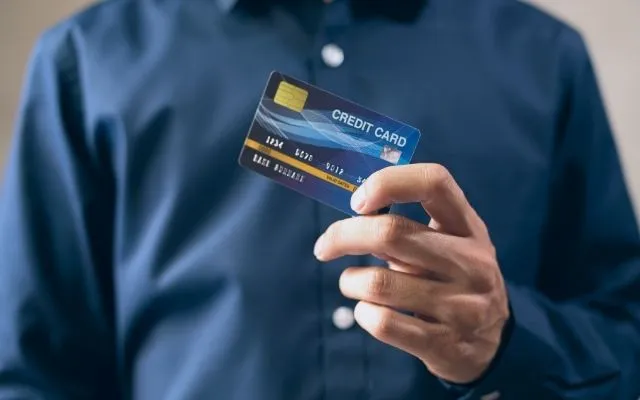
How to Cancel Amazon Credit Card Effortlessly in 2023
Table of Contents Amazon is the most popular online marketplace, which has become integral to daily life. Whether electronics, books, phones, TVs, gifts for someone,
Selling is an art, and credit card sales is a mixture of art and a bit of science. You simply cannot go and sell your card to a customer without formulating a proper strategy or preparing a sales pitch keeping all the critical aspects of sales in mind.
Selling is not just asking the customer if they would like to buy the product or service you are selling; it is a well-coordinated plan that plays on human psychology so that most customers feel attracted to that product or service and eventually buy it.
When it comes to credit cards, be it a normal one, a store credit card, or a business credit card, you need to keep the basic tenets of sales in mind and design your strategy according to the target market and the specifics of the industry.
Worry Not! If you are struggling to develop a plan and want to know how to sell credit cards, my guide and tips, which I have gathered for over a decade in a competitive financial environment, would help you.
It will show you how to formulate a strategy, confidently approach the customers, and convert your sales successfully.
Step 1: Research the Product and its Offerings
Step 2: Identify the Target Market
Step 3: Design a Marketing Strategy
Step 4: Know Your Customer and Prepare a Targeted Sales Pitch
Step 5: Don’t Rush and Give Time to Make Decision
Step 6: Handle the Positive and Negative Response Professionally
Step 7: Close the Sale and Follow Up
The first thing that you need to do is research your product line and its offerings thoroughly. It would help if you had a detailed understanding of the products you are trying to sell.
Some Questions to ponder when researching:
Once you have answers to the questions above, you will be confident when facing the customers and can quickly answer them according to their needs.
You will have ample information to start and build up a meaningful, relevant conversation with the customer.
Formulating a positive reply to the probable questions you may get from customers is essential as it may make or break the deal.
After researching your product or service, the second most crucial step is understanding your customers and finalizing your target market.
According to a 2022 federal reserve study, customers spend cash significantly lower than other modes of payment for their overall purchases. It is as low as 20%, meaning there is a massive market for alternate payments like credit cards or online payments.
You can do an STP or Segmentation, Targeting, and Positioning analysis and identify your target market. Identifying a target audience will help you position your product.
For example, you cannot target a travel credit card to someone who does not travel frequently or a premium credit card to someone who does not have adequate credit scores or would not meet the other card criteria.
After identifying your target, it’s time to design your marketing strategy. The marketing strategy needs to be designed depending on the type of credit card and the company’s scale.
First, before you formulate a marketing strategy and finalize the ad vehicle, you need to create personas to understand the needs and requirements of the target market and then finalize the type of marketing strategy to follow, ATL, BTL, or TTL.
If it is a major credit card company, then the focus would be on ATL or Above The Line Marketing channels such as Television Ads and Newspapers or Billboards or sometimes even TTL or Through The Line, which is a combination of ATL and BTL or Below The Line.
A new credit card company would focus more on BTL marketing strategy using online channels like Google Ads or YouTube Ads and also use the social media platform and make personalized marketing strategies through events, contests, etc.
You can also use a CRM’s help and Email Marketing to reach potential customers. So, the point is that if you want to know how to sell credit cards, it is imperative to have a strong marketing plan.
You must prepare a sales pitch for selling cards offline or on the phone. You need to humanize the conversations, identify the customer’s needs, and sell the card that would satiate those needs.
Although the approach remains the same, there are some technical aspects to the different selling techniques, and you have to tweak them according to your approach.
To know how to sell credit cards, you must master the following.
One of the most important parts of direct sales is approaching customers and getting to know them properly before offering your product.
You can formulate a strategy to converse with the customer to seek more information to justify your credit card and how it will benefit them.
Suppose you are selling a store credit card. You can strike up a conversation with the niceties.
If that customer is buying a phone or a tablet, you can pitch them the store credit card and explain how it would not only help them get discounts for the first purchase but also get credit card reward points and keep giving benefits for future purchases.
Prepare a pitch and answers for possible questions and queries beforehand.
You can follow this template:
A potential example of a telephonic conversation may look like the following:
You (Credit Card Salesman): Hello! Am I speaking to Mr. Anderson?
Mr. Anderson: Yep! Who’s this?
You: Hi! This is Alex from American Express. Got your reference from Ms. Brown! She thought our latest offerings could greatly benefit you and hence shared your contact.
So, Mr. Anderson, the holiday season is almost here. Are you planning to buy gifts and presents for your family during Christmas or gift your family a fantastic holiday?
Mr. Anderson: Yeah! I plan to buy gifts for my family, but why are you asking me that?
(You have tricked him into selecting an option by giving him two options. This allows you to offer the right product to Mr. Anderson)
You: You can save money and get additional rewards using our American Express Credit Card or by gifting American Express Gift Card to be used on Amazon or other retailers.
You can use the card to purchase gifts to get rewards and discounts or gift the gift cards to your near and dear ones who can shop for anything to their liking with it, and you don’t have to worry whether they will like the gift or not as they can choose their own.
Mr. Anderson: So, I get additional perks, like discounts and rewards with the credit card and any other offers with the gift card?
You: Yes, you get 5% discounts and cash rewards and collect 10 points for each purchase and other perks for using the American Express Platinum card and get discounts for using our prepaid gift cards from our partners.
You can redeem your rewards points for a gift card as well!
Mr. Anderson: Ok! Sounds Great. I would like to buy the Platinum Card. So what’s the process?
You: I have shared a link. Please click it, fill in the necessary information, and share the documents. Once the process is complete, your card will be mailed to you.
You just need to activate the card by registering it on our website, and you are good to go.
Never rush and force your customers to make a decision hurriedly as, more often than not, it will be negative.
Getting a credit card involves a commitment, and everyone needs time to make a financial decision. So, once you have offered the customer your offer, give them time to consider it.
If your value proposition and positioning of the credit card have been correct, then it is highly likely that he would go for it. If not, then only they will not go for it.
If the customer says Yes immediately, then well and good otherwise, wait 2-3 days before following up on them.
Now, if you feel that the customer will say No, you should always have a last option (approved by your company) to acquire the customer. Some additional offers that are not offered to everybody and not mentioned might delight the potential customer and convert them to a successful sale.
If the customer says Yes after 2-3 days, make the signup process as smooth as possible. Assist them in every step and ensure everything runs smoothly. Keep updating them regularly.
However, even if you are rejected, don’t get disheartened, as rejection is also essential when you want to learn how to sell credit cards, as it will broaden your perspective and improve your sales game.
Congratulations are in order once the customer has confirmed and the application has been processed and approved.
You should congratulate the customer personally to help build a stronger bond. Keep them updated with more offers and additional products and services, as they are more likely to trust you.
Get help from the customer to build your network and get more references, significantly enhancing your sales career.

Also Read:
If you want to build a successful sales career and learn how to sell credit cards quickly, remember the following points.
The idea is not to waste any opportunity and try to take the positive things out of a negative outcome. It will hone your sales skill, grow your network, and eventually enhance your career.

Also Read:
The most frequently asked questions are as follows:
Most credit cards allow converting a certain amount of your limit as cash through cash advances. You can withdraw cash by depositing it in a bank account, writing a convenience check, or withdrawing it from an ATM with your credit card by selecting the Cash Advance option.
Credit card flipping is reaping the rewards like welcome bonuses, other new card benefits, or balance transfers by utilizing as many credit cards as possible that one can manage and then canceling or closing the cards to take advantage of the cards again.
Most major credit card issuers have strict criteria for eligibility when someone applies for their credit card. According to CNBC, 5/24 is a rule by Chase that says anyone who has opened five or more credit cards from any issuer in the last 24 months is not eligible for a Chase credit card.
Card churning is not illegal, but the issuer of your card issuers don’t condone the use of card churning, and they may include specific terms and conditions against their usage, which means if you are found churning their credit card, it is within their right to close your account and/or confiscate your rewards.
Read More:
I am sure you are now well-versed about how to sell credit cards as I have discussed all the pain and gain points of credit card sales.
Always research the product and try to identify the target market for which the products are suitable, as it will significantly increase the chances of a sale.
Focus on customer relationships and always create a strong bond with the customers even if they don’t purchase your credit card, as it will help you build a strong network. They may give references who may become customers.
Sale is a process that you need to practice, and with time and experience, you will excel at it, and then you don’t need any guide on how to sell credit cards.
Disclaimer: The information provided in this article is for informational purposes only and should not be construed as financial advice. The author’s opinions are their own and should not be taken as a recommendation to invest in any particular product or service. It is strongly advised that you consult a financial advisor before making investment decisions. Investing always carries risk, and it is up to each individual to consider their options and make informed choices carefully.
Share this post:

Table of Contents Amazon is the most popular online marketplace, which has become integral to daily life. Whether electronics, books, phones, TVs, gifts for someone,

Table of Contents Gift cards are one of the most popular ways of gifting nowadays as they give gifters peace of mind without worrying whether

Table of Contents Credit cards have become integral to most of our lives as it helps us manage our financial needs in a fast-paced digital